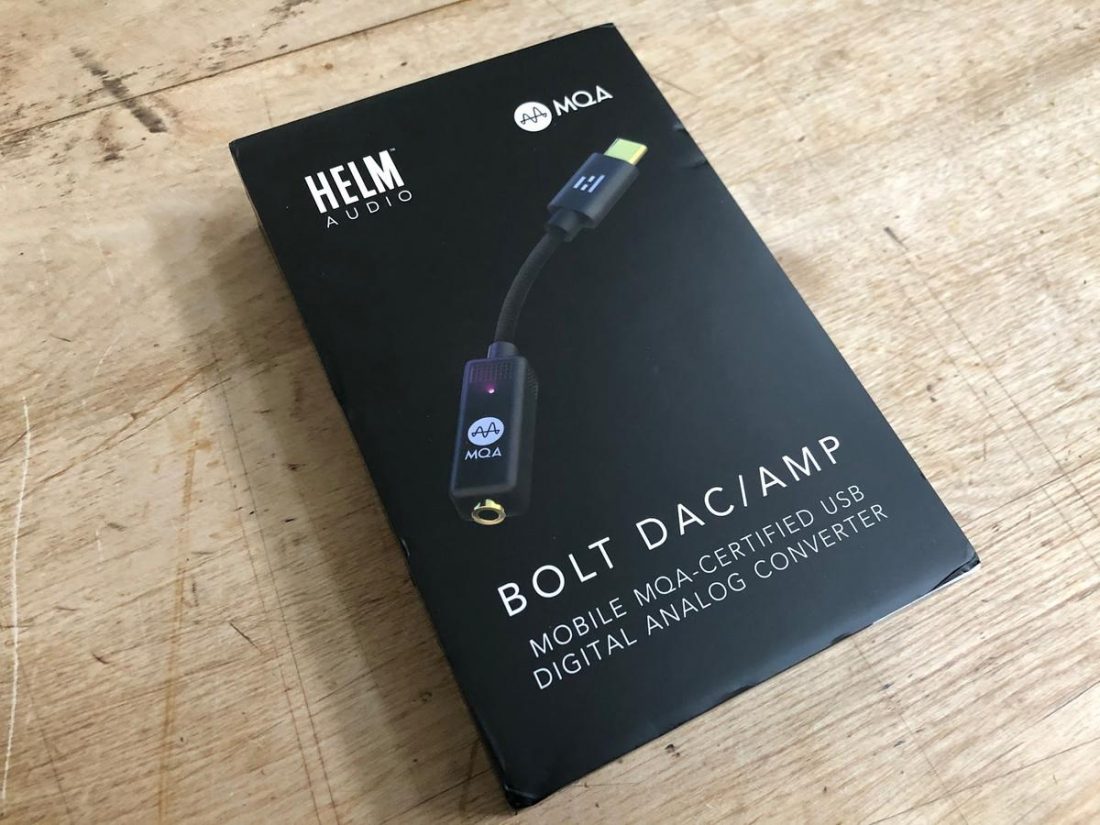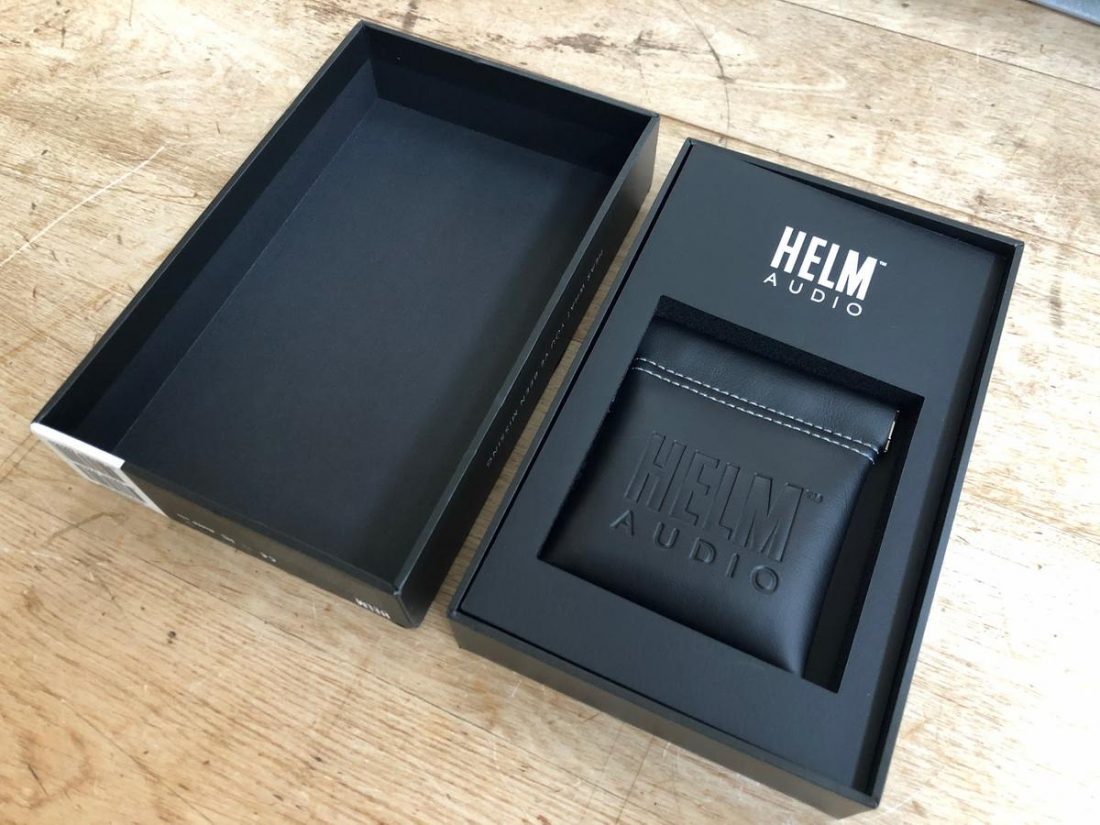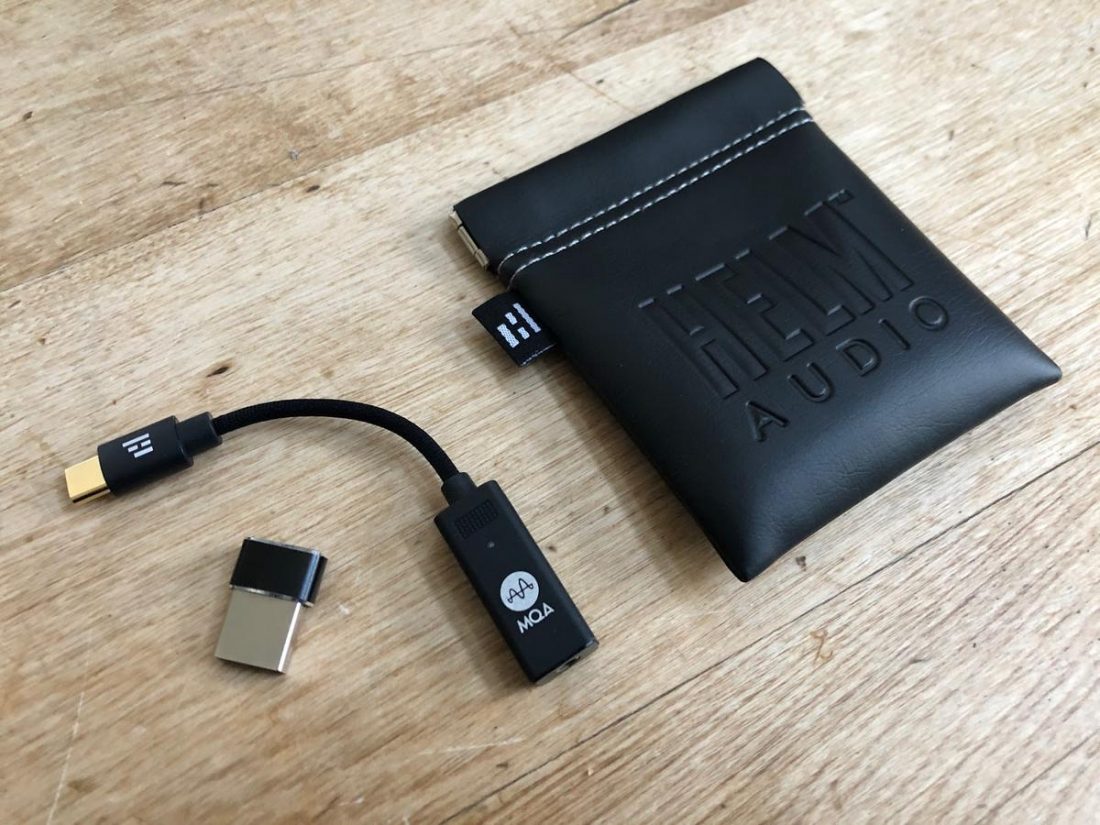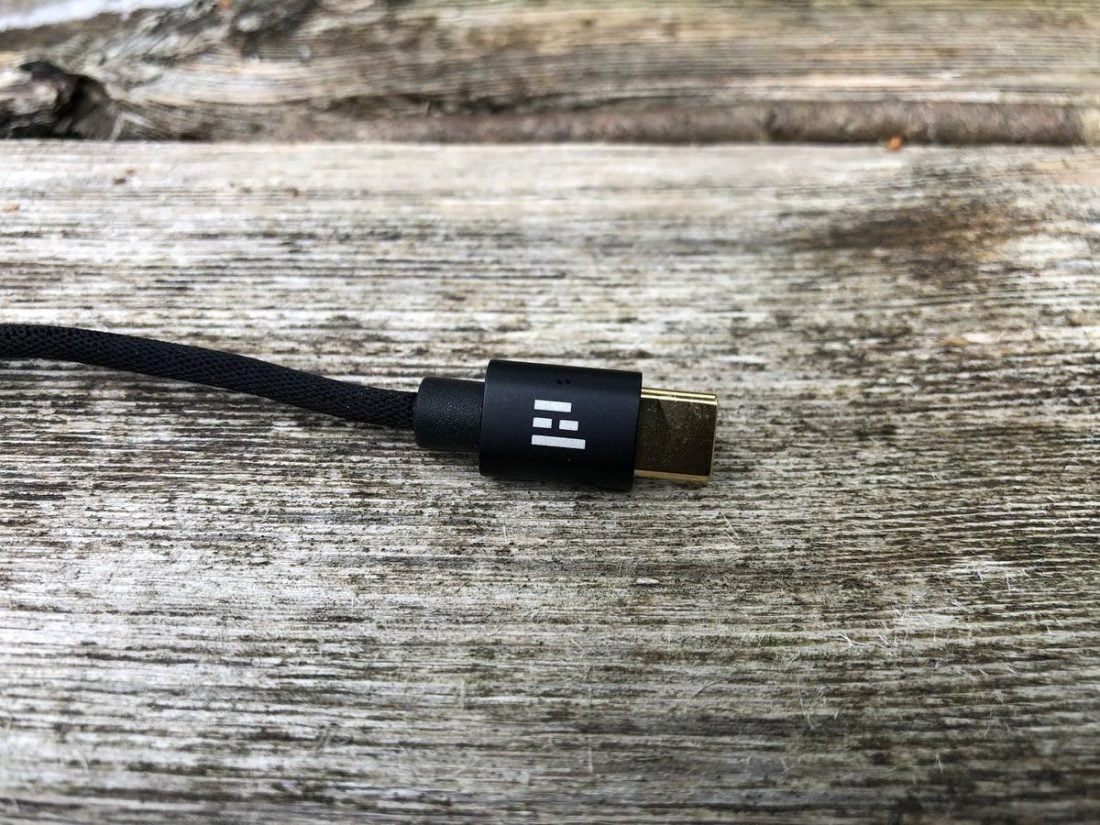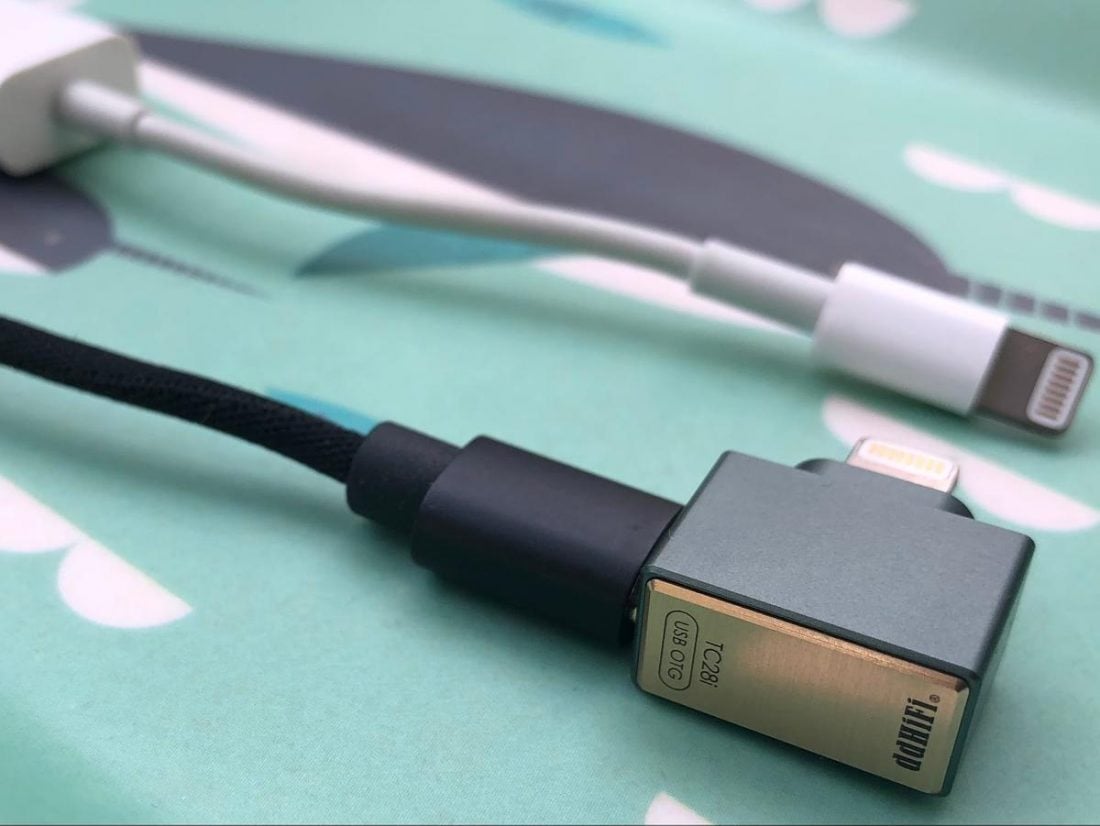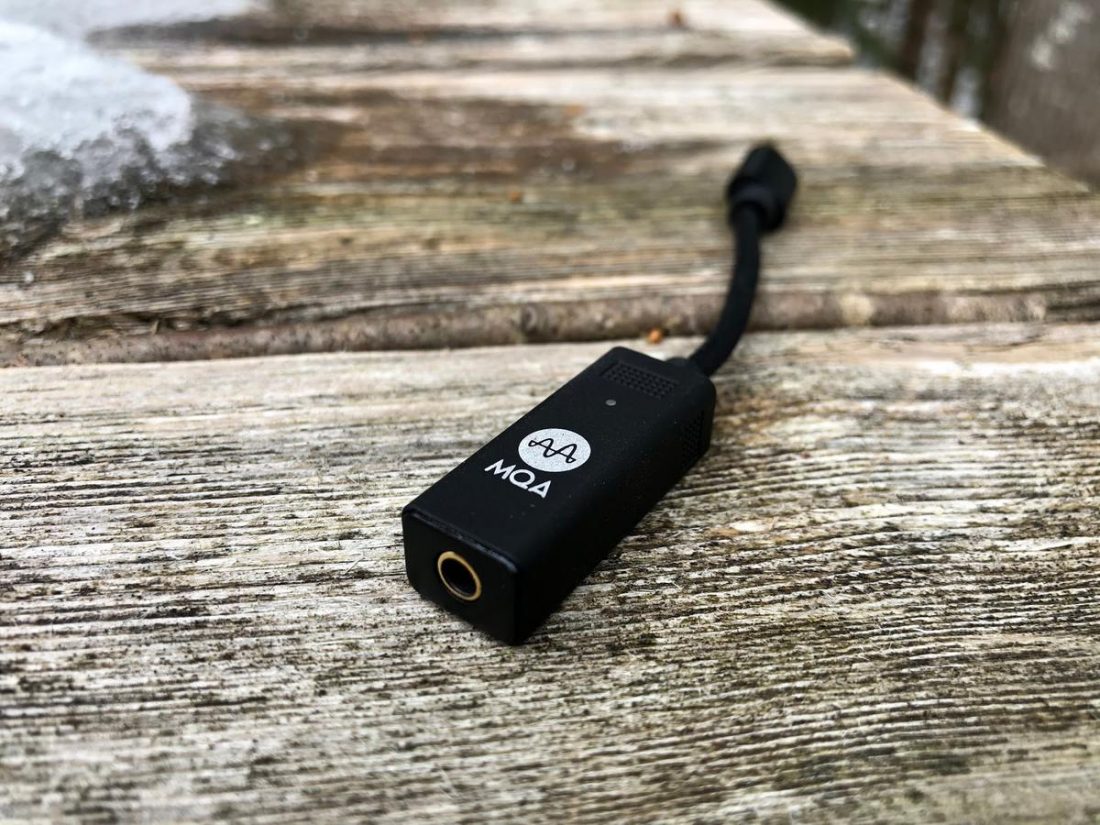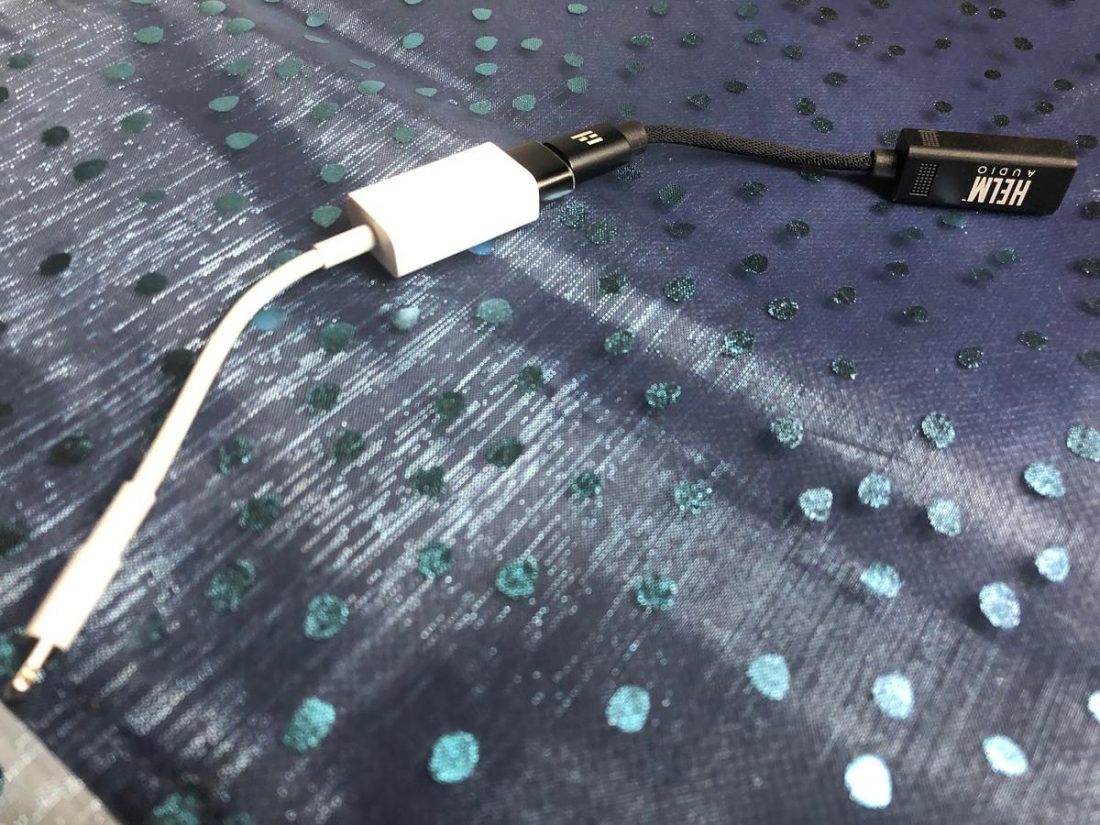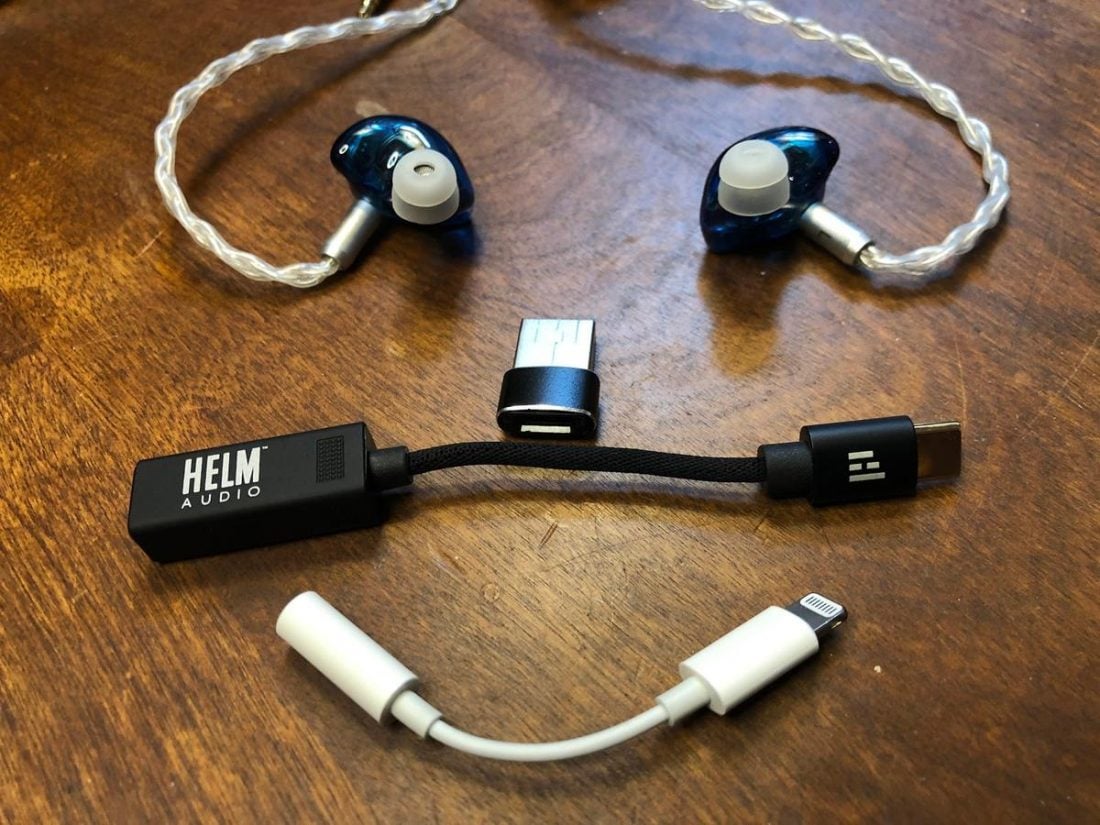Relative new kids on the block (or perhaps with that subtitle, I should say, “one of a new order of companies”) Helm Audio is making a name for itself by releasing several innovative and exciting portable headphones products. The tiny MQA-enabled and THX-certified BOLT DAC/amp dongle is likely the most intriguing of them all. There are a few THX AAA (Achromatic Audio Amplifier) headphone amplifiers on the market, but none quite so affordable or diminutive as the BOLT. Note that the BOLT is ‘THX certified,’ and it does not use THX-supplied AAA hardware. Regardless, THX certification indicates an ultra-low distortion design and a focus on powerful, clear amplification, free from coloration. Hardware manufacturers must meet THX’s stringent requirements to achieve this certification. MQA (Master Quality Authenticated) promises the ultimate in audio fidelity. Like THX, the MQA company works with its audio hardware partners to design and certify their devices. MQA integration is still relatively rare, especially in portable DACs, so it’s exciting to find it in the BOLT. Here is a physically similar device to the ubiquitous (and surprisingly capable) Apple 3.5mm headphone dongle. At 10x the price, the $99 BOLT boasts far more capable specs and certifications. We’re going to find out if it can deliver on its impressive resume and best the industry standard. All those certifications certainly raise expectations. Can something so small make use of that technology?
Company Overview
Helm Audio, headquartered in Los Angeles, California, was founded in 2017 by British and American industry veterans. Their mission states that “nothing should come between you and your music to truly HEAR what you’ve been missing!” Helm Audio currently produces various personal audio products, including planar magnetic headphones, THX and MQA certified portable DACs and amplifiers, wireless IEMs, and accessories.
Technical Specifications
Price: USD$99 Form: Portable DAC/Amp Removable Cable: N (USB-C ±7.5cm) Connection: USB 2.0 Source Jack: 3.5mm SNR: 120dB THD+N%: 0.0008 @ <150ohms, 0.0013 @ >150ohms Frequency Response: 20Hz-20kHz ±0.06dB Compatible Formats: PCM, MQA, DSC DoP PCM Sample Rates: 44.1, 48, 88.2, 96. (176.4, 192, 352.8, 384kHz MQA) THX Certified: Y MQA Stream Unfolding: Y Automatic Voltage Output: 1V for < 150ohms, 2V for >= 150ohms Length: 112mm Weight (g): 7.09g
Packaging
Helm bucked all the usual packaging trends in a shocking and unusual move and truly delivered a unique and memorable unboxing experience. No. Not really. The BOLT comes in a standard black cardboard box, with a high-res product photo on the front and a list of specs and features on the back. And, honestly, there’s nothing wrong with that. Although, I did have to search through my shelf of boxes and pull out a few likely (and virtually identical) candidates before I found where I stashed the original box. Inside the box, the wee DAC/amp is inside the included pouch and held in place by a foam insert. Standard stuff for most portable audio gear these days.
In the box
Helm BOLT Dac/amp USB-C-to-USB-A adapter Vinyl storage pouch with a self-closing mouth
Design
Although similar in size to the Apple dongle, the BOLT DAC/amp manages to feel like it’s on an entirely different level of build quality. It is very well made and robust. The approximately 3cm long rectangular aluminum body has a non-slip rubbery finish and feels extremely tough. Textured grip bands on each side are a very nice touch. There is a tiny USB LED indicator on one side above the MQA logo. The 5cm cable is sheathed in cloth and feels equally as strong and premium as the casing. A metal-housed, gold-plated USB-C jack rounds out the impressive little device. The BOLT couldn’t be simpler to use. There are no physical controls, and the source device handles volume. Just plug in headphones and the BOLT’s USB-C jack into compatible (Apple or Windows) computers and Android devices, or use the included USB-C-to-USB-A adapter whenever necessary. Apple iOS devices require the $30 Lightning to USB-A adapter to connect to the BOLT’s USB-C-to-USB-A adapter, and as such are a far less elegant arrangement. This requirement is an argument against using a fixed cable on a device like the BOLT. A USB-C port and a couple of OTG (USB-C-to-USB-C and USB-C-to-Lightning) cables would be a better solution. Perhaps we can look forward to this on a BOLT 2 or BOLT Pro in the future. It’s important to stress how little, tough, and ultra-portable the BOLT is. If you are going to carry a device in your pocket, the closer it is to cable-sized, the better. If you want to tether a large portable DAC/amp to your phone, that’s up to you, but most dongle users value portability and convenience.
LED indicator status
Internals
Although Helm Audio is somewhat reticent on providing many details on the internal design, the BOLT reportedly uses an ESS Sabre chipset. The ESS chips are starting to dominate the DAC market, as they offer extremely impressive measurements, comprehensive feature sets, and affordable prices.
MQA certified
While the BOLT specs state that it handles sample rates up to 384kHz, it is limited to 96kHz for everything but MQA playback. Like many similar MQA devices, the first MQA ‘unfold’ is handled by the source software (such as the Tidal application) up to a maximum of 96kHz (a limitation of the BOLT’s USB interface). The BOLT DAC chipset then handles the remaining unfolds and MQA rendering up to the 384kHz DAC chipset maximum.
THX certified
It is important to note that the BOLT is ‘THX Certified’ rather than ‘Powered by THX AAA.’ To be certified means that the BOLT has met the THX performance benchmarks but does not utilize THX-provided circuitry for amplification. Unlike the documentation that THX provides regarding their AAA amplifier modules, the THX certification process is far vaguer from a consumer’s point of view.
Amplification
The BOLT features automatic impedance and signal sensing. When the BOLT is paired with lower impedance headphones (<150 Ohms), it sets its output to 1V. For headphones with an impedance greater than 150 Ohms, the output is automatically set to 2V. This functionality is an unusual and welcome addition to a DAC/amp dongle. More power is always welcome to allow for usage with a greater range of challenging to drive headphones and IEMs. Audio Science Review recently measured the BOLT’s performance and was quite impressed with its ability to adequately drive full-sized headphones between 25-600 Ohms with minimal distortion. They measured the BOLT to have (an impressive for its size) 61 [email protected] Ohms and [email protected] Ohm.
Helm BOLT Sound
I’m an Apple guy, so I used the BOLT primarily with my iPhone. This pairing also made it relatively easy to compare the BOLT and the Apple Lightning-to-3.5mm dongle. Of note, I didn’t notice a significant decrease in battery life between the two devices. I tested the BOLT with a wide variety of IEMs and full-sized headphones just to see where its limits start to appear. For a minuscule $99 device, it consistently amazed me with its ability to drive almost anything I plugged in. No, it’s not a replacement for a full-sized headphone amplifier for extremely hard-to-drive headphones. But it’s certainly good enough to drive any pair of IEMs I plugged in, from the Thieaudio Monarch to the Moondrop Blessing2:Dusk, and even the Audeze LCDi3. In short, the BOLT fully delivers on its promises. It works excellently and sounds superb for this type of device. It provides clear and uncolored amplification and is notably natural and neutral sounding. Nothing sounds distorted or boosted – just clean power for most headphones and IEMs. The poor old Apple dongle is far flatter and dull-sounding in direct comparison. The BOLT’s low frequencies have greater authority and control. This is likely (at least partially) due to the BOLT’s far more robust amplification. User engagement and music enjoyment are heightened as a result. The BOLT offers clarity and impact that many other tiny DAC/amp dongles are missing.
Where to Buy
Conclusion
I’m impressed. The BOLT offers fantastic build quality, MQA and THX certification, small size, high-power output, and clean and clear sound. What’s not to love? Frankly, the only thing missing is the lack of a replaceable cable and the requirement for a Lightning-to-USB adapter for use with iOS devices. Of course, if you aren’t an Apple user, this will not impact you. Yup, the BOLT is 10x the price of the Apple dongle. However, it sounds superior. It also handles more challenging to drive headphones far better. 10x more is still only $99, and in my book, it’s well worth the price of admission.


